09.A BIO The Work of Gregor Mendel ALL (PART A)
1/28
There's no tags or description
Looks like no tags are added yet.
Name | Mastery | Learn | Test | Matching | Spaced |
|---|
No study sessions yet.
29 Terms
Inheritance
The process in which genetic material is passed from parents to their offspring
Genetics
The study of heredity
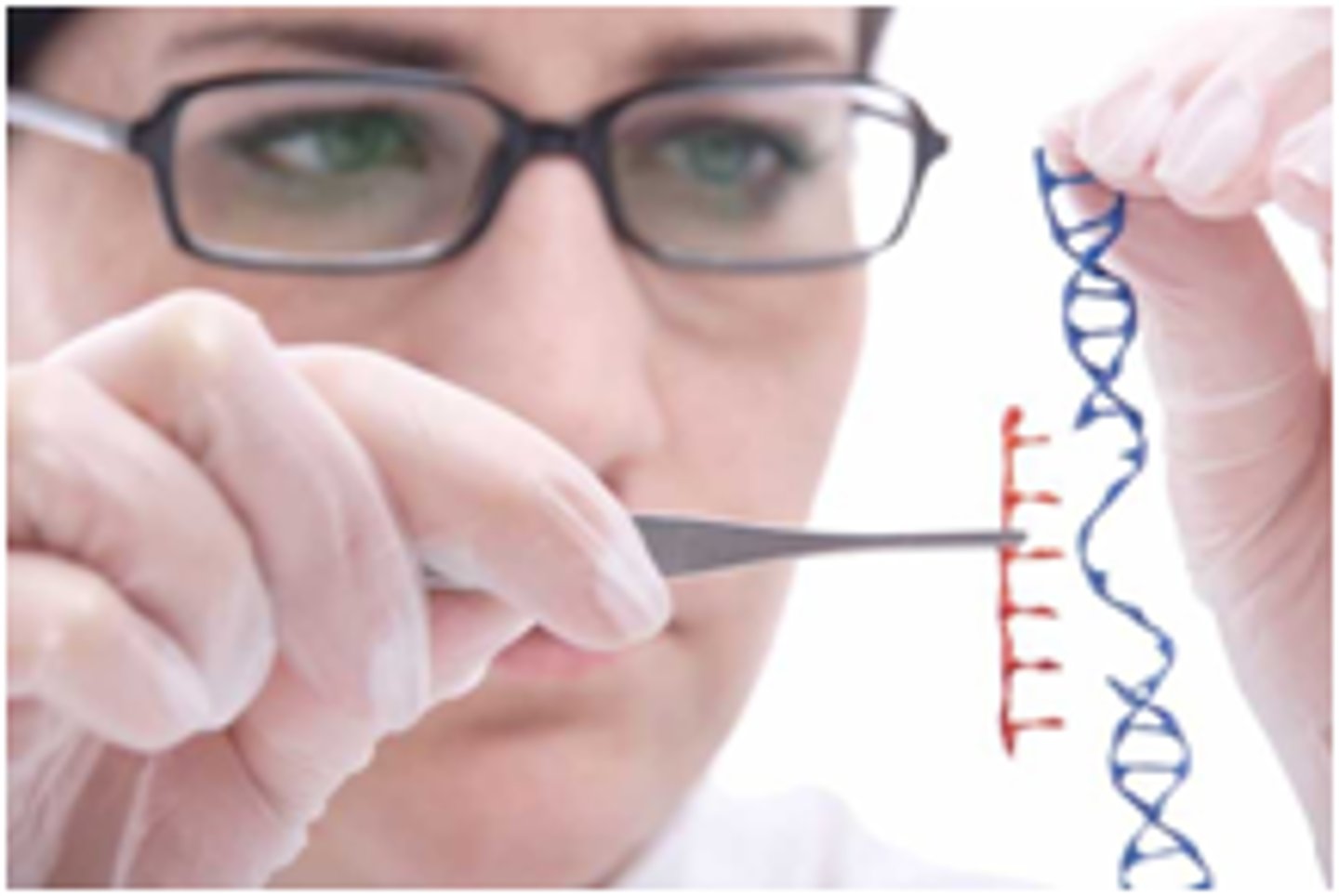
Trait
A specific characteristic that varies from one individual to another such as plant height, seed color, seed shape, flower color, etc.
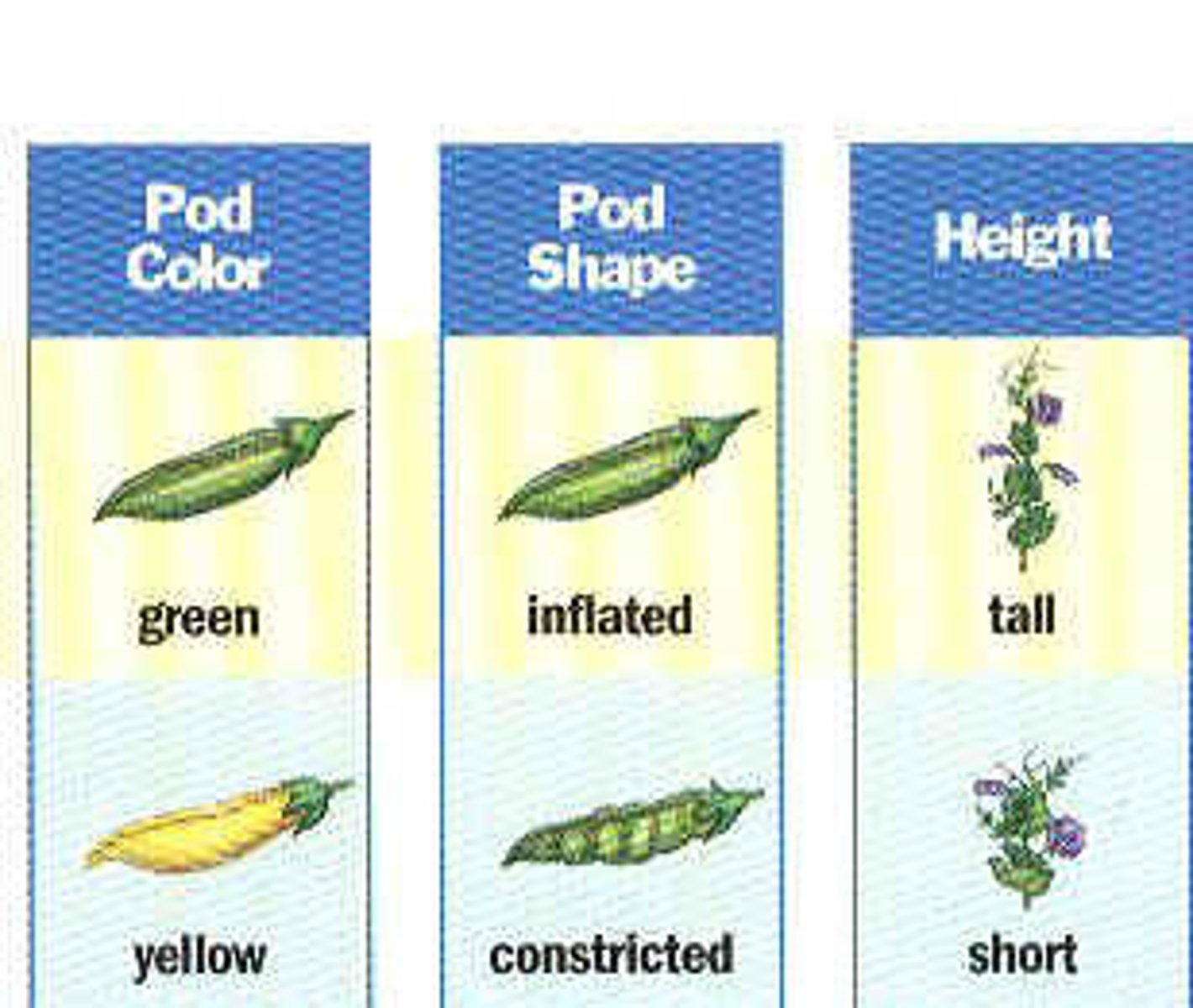
Gene
The sequence of nucleotides on a chromosome that codes for a protein and determines a trait
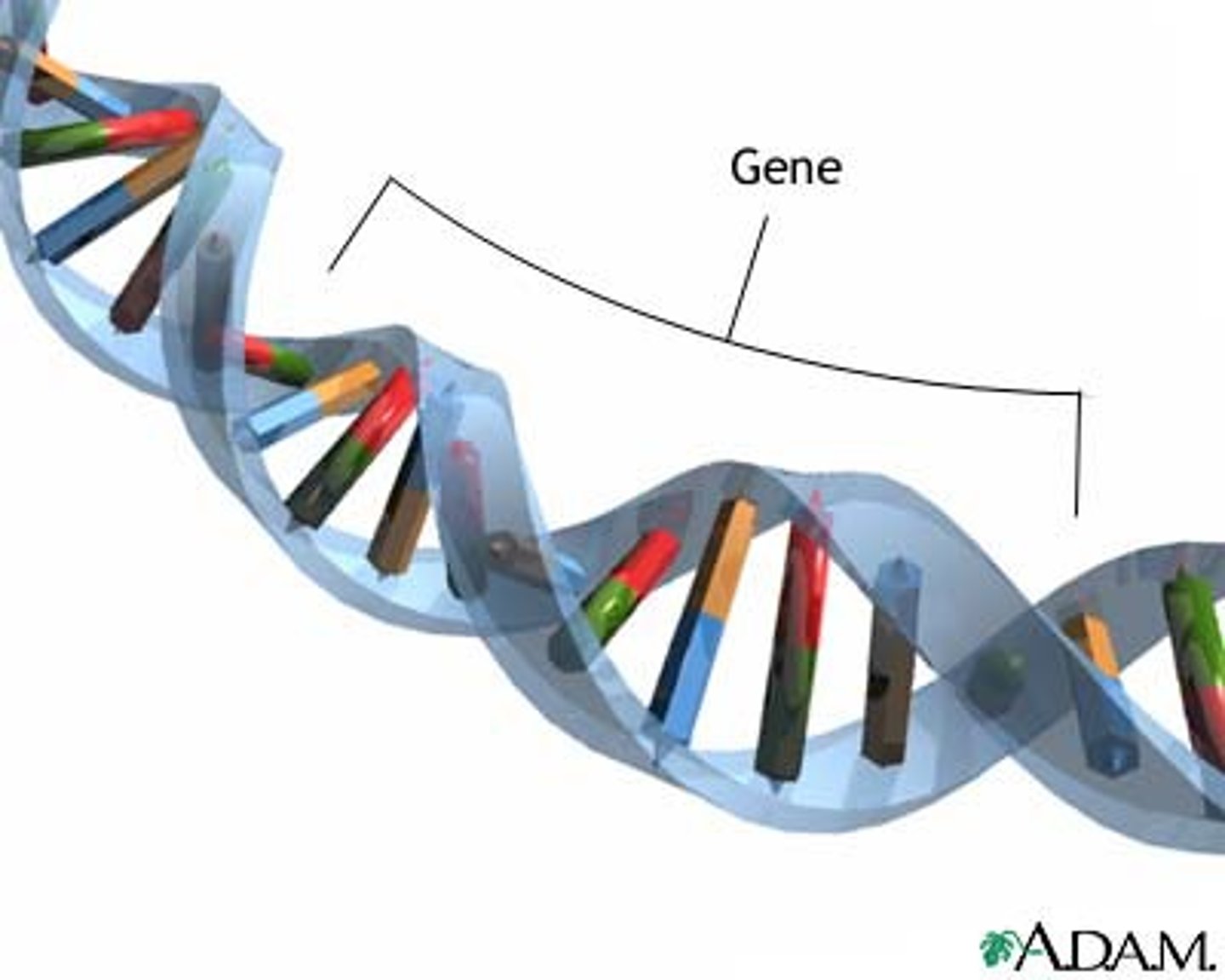
Allele
A form of a gene; for example, the gene for flower color could produce either purple flowers or white flowers; expressed by letters such as R (purple) or r (white)
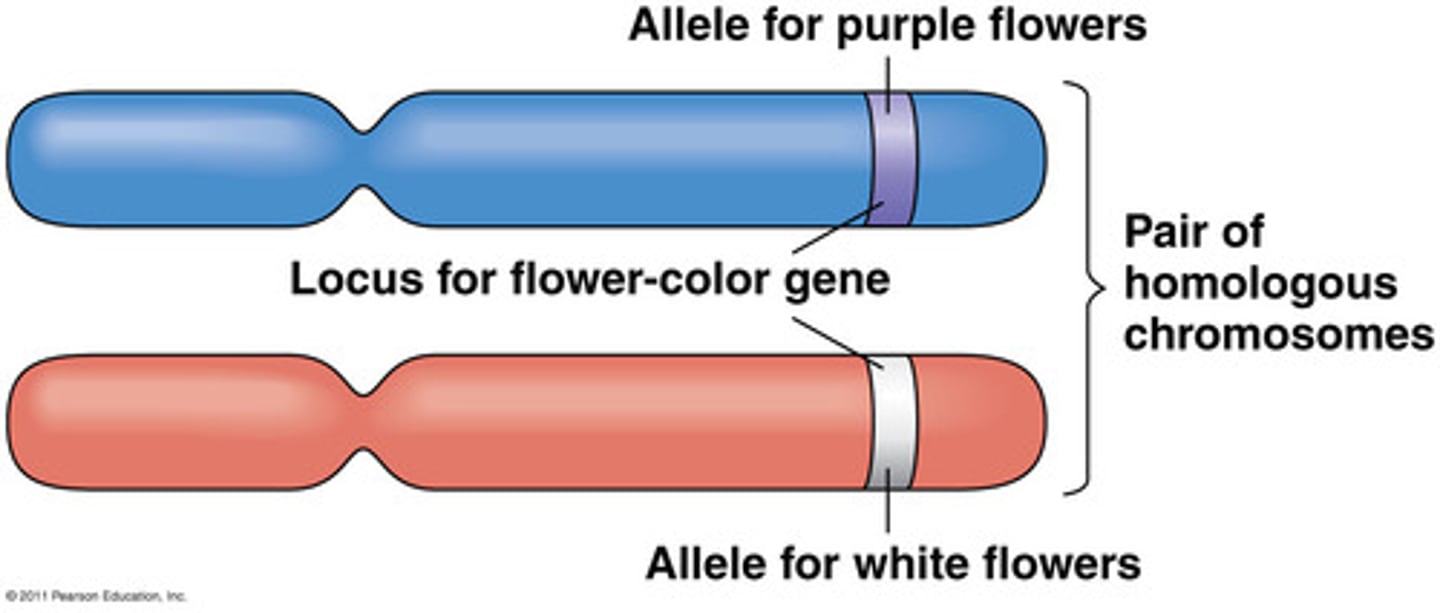
Self-pollination
The fusion of sperm and egg produced by the same organism
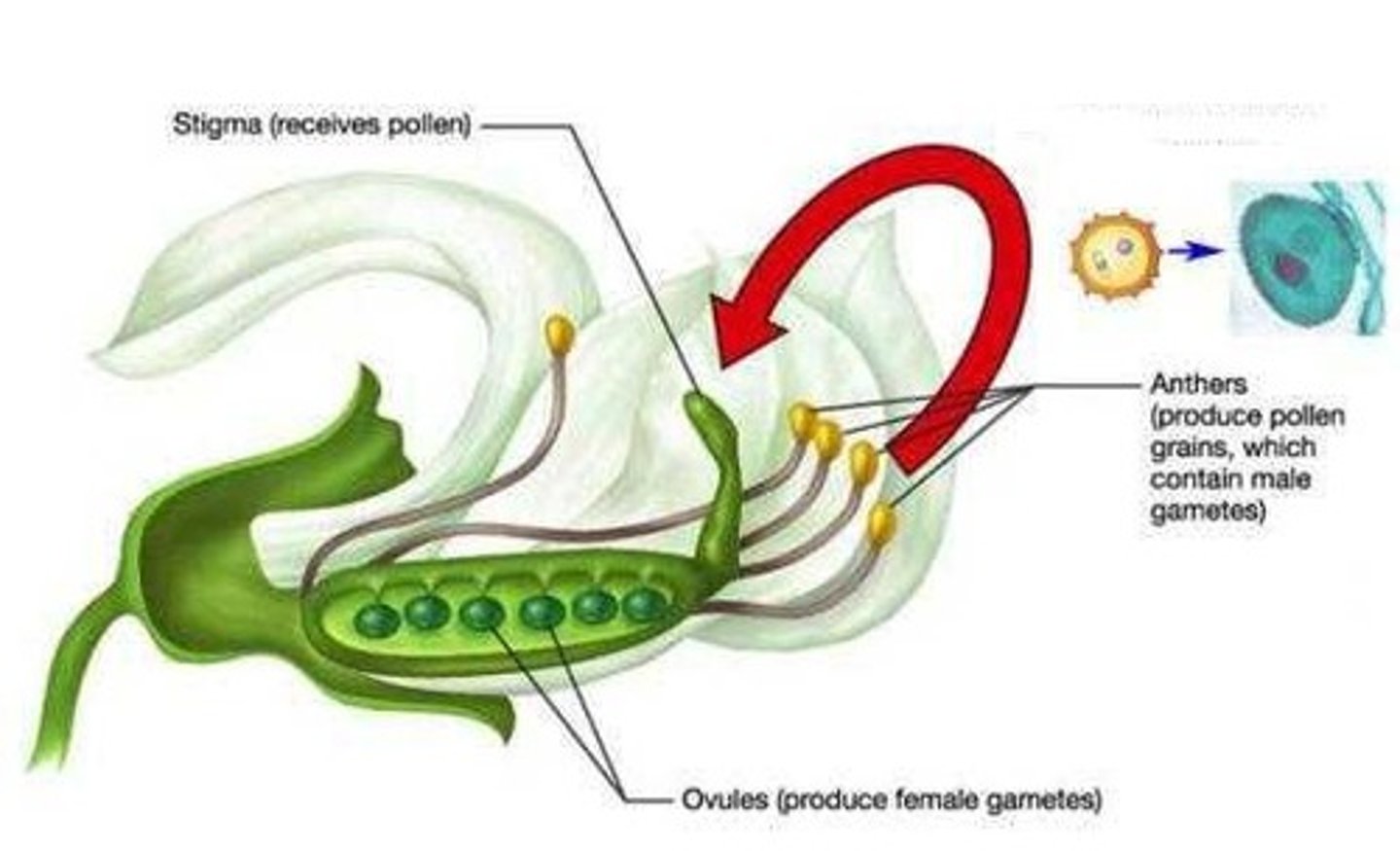
Cross-pollination
The process by which sperm from one flower's pollen fertilizes the eggs in a flower of a different plant; also known as cross-fertilization
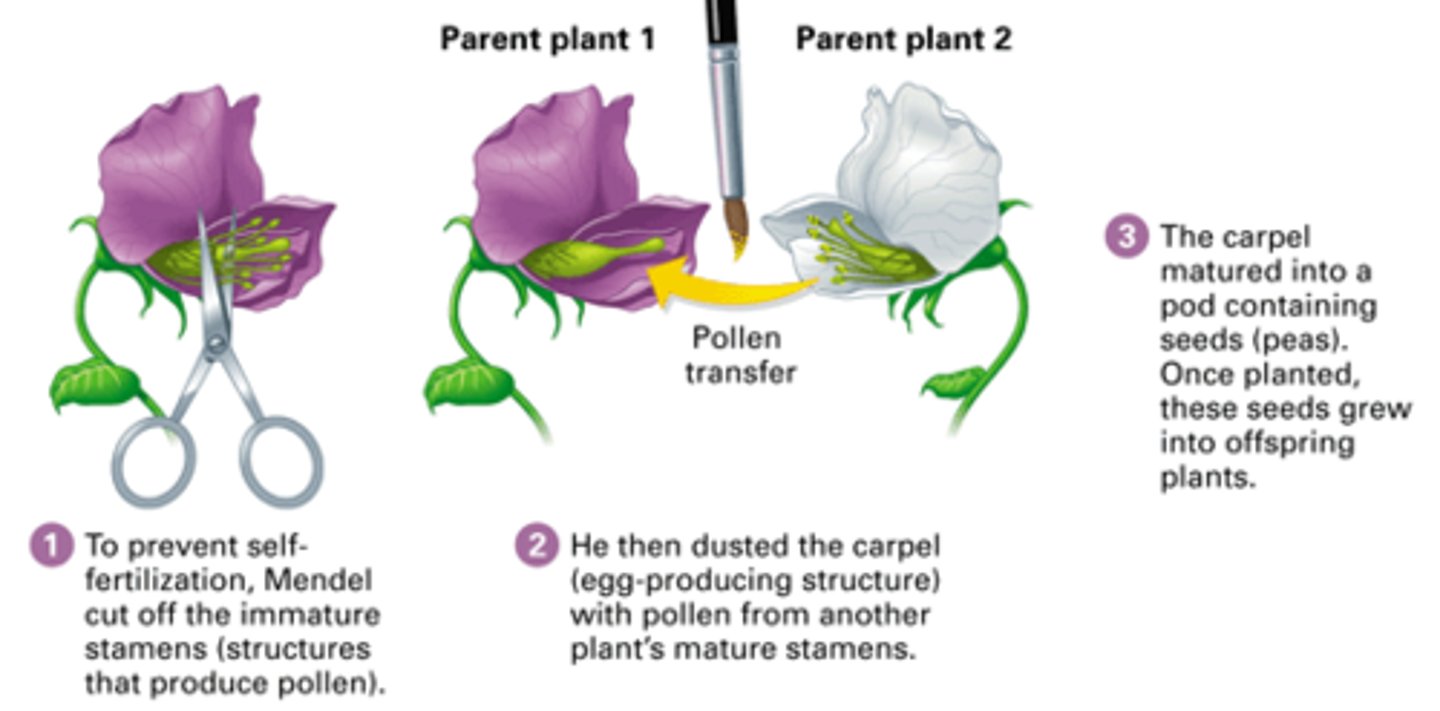
Dominant
A trait that will show up in an organism's phenotype if gene is present that is represented by a capital letter such
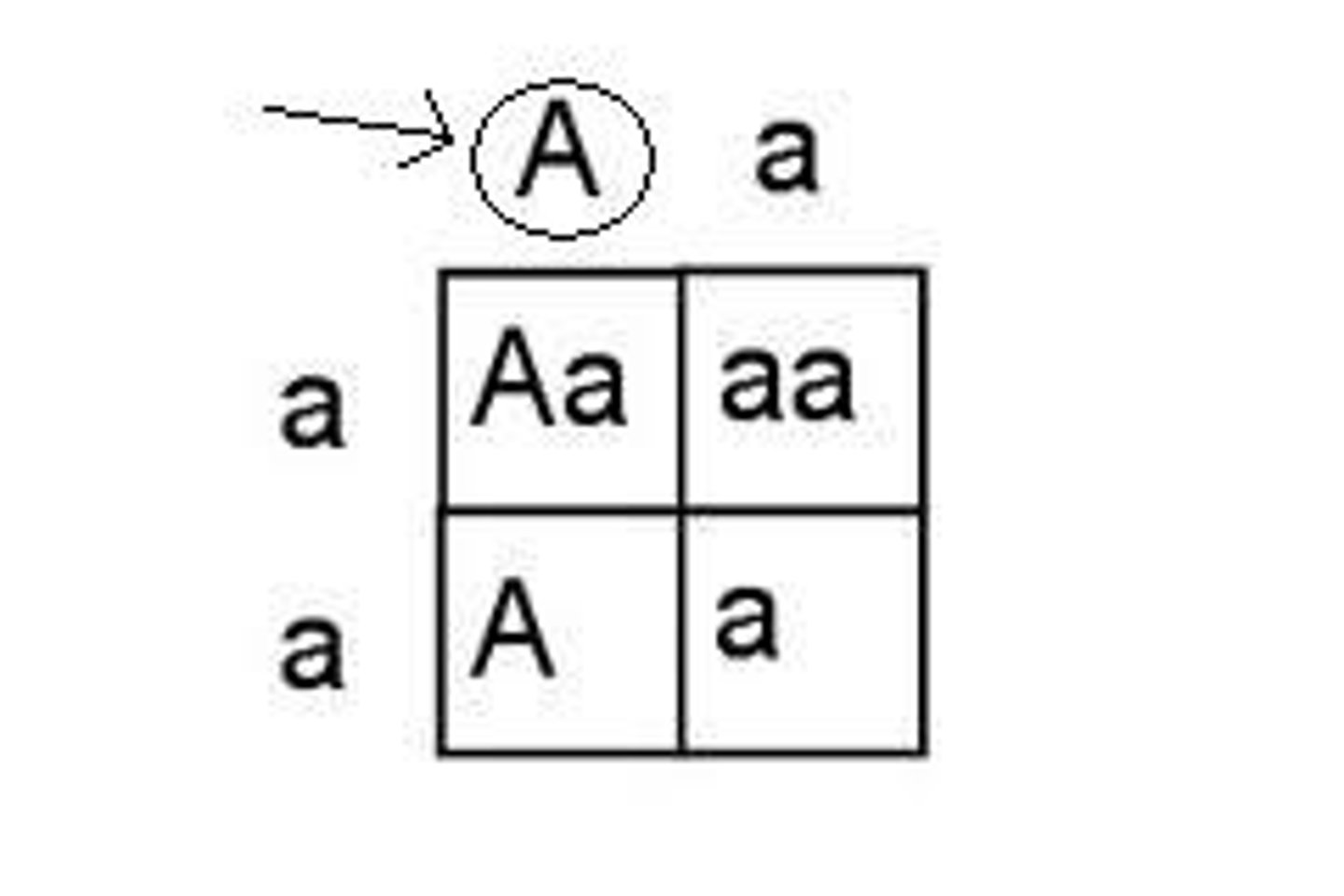
Recessive
A trait that will only appear in the phenotype if organism inherits two of them; covered up by the dominant gene that is represented by a lowercase letter
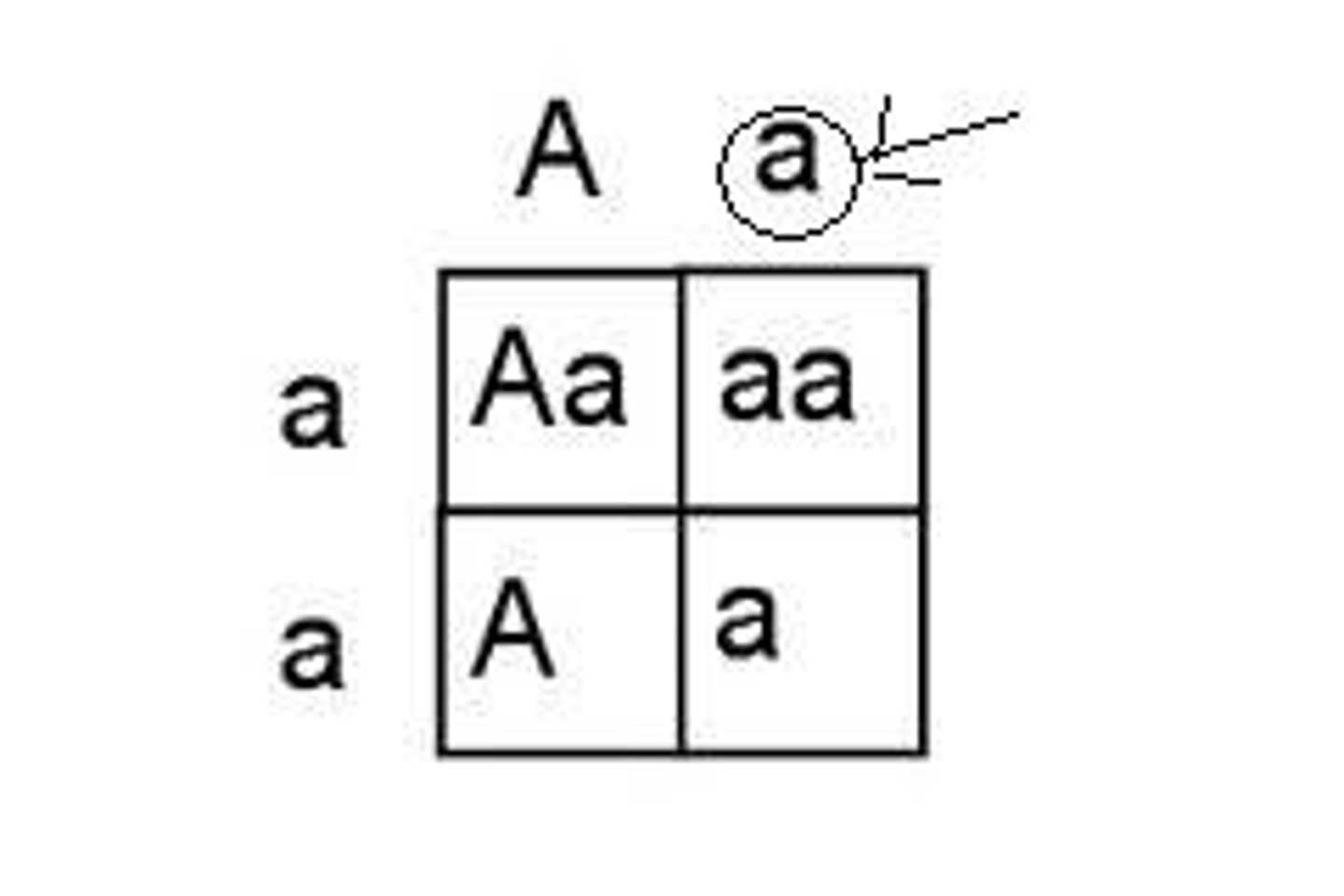
True-breeding
Inherited two identical alleles for a trait; homozygous or purebred
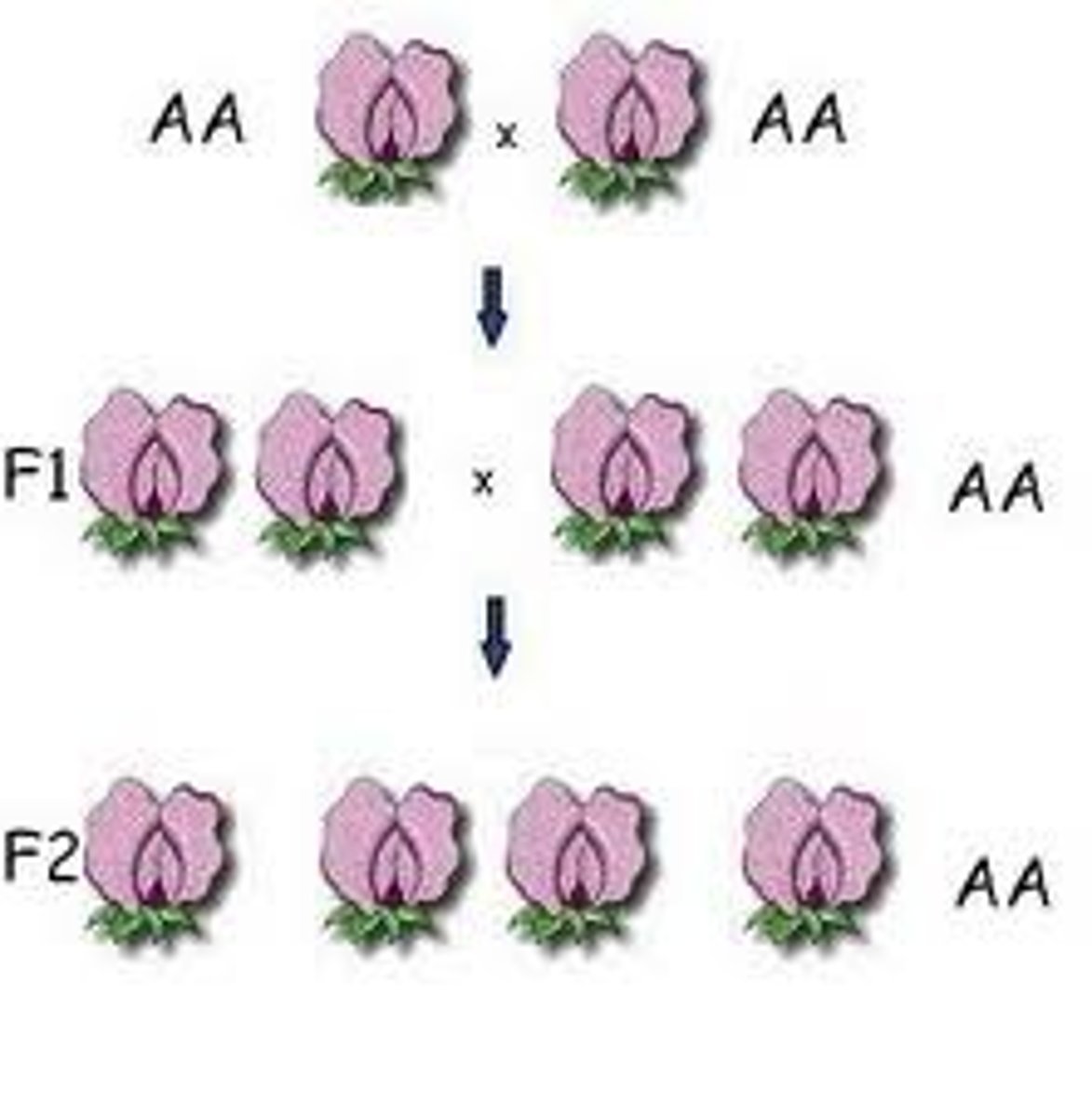
Segregation
The separation of alleles during meiosis or gamete formation
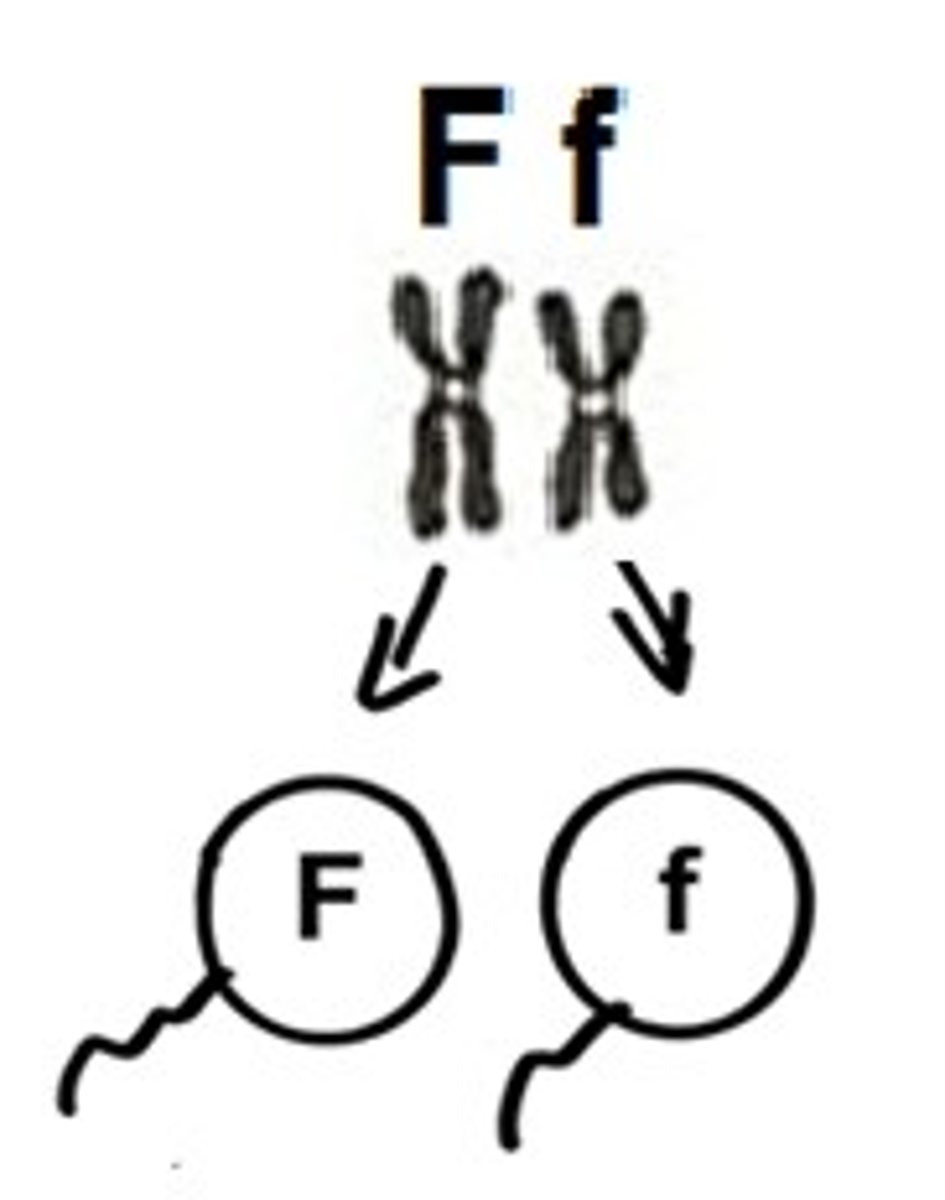
Gamete
Sex cell; sperm or egg
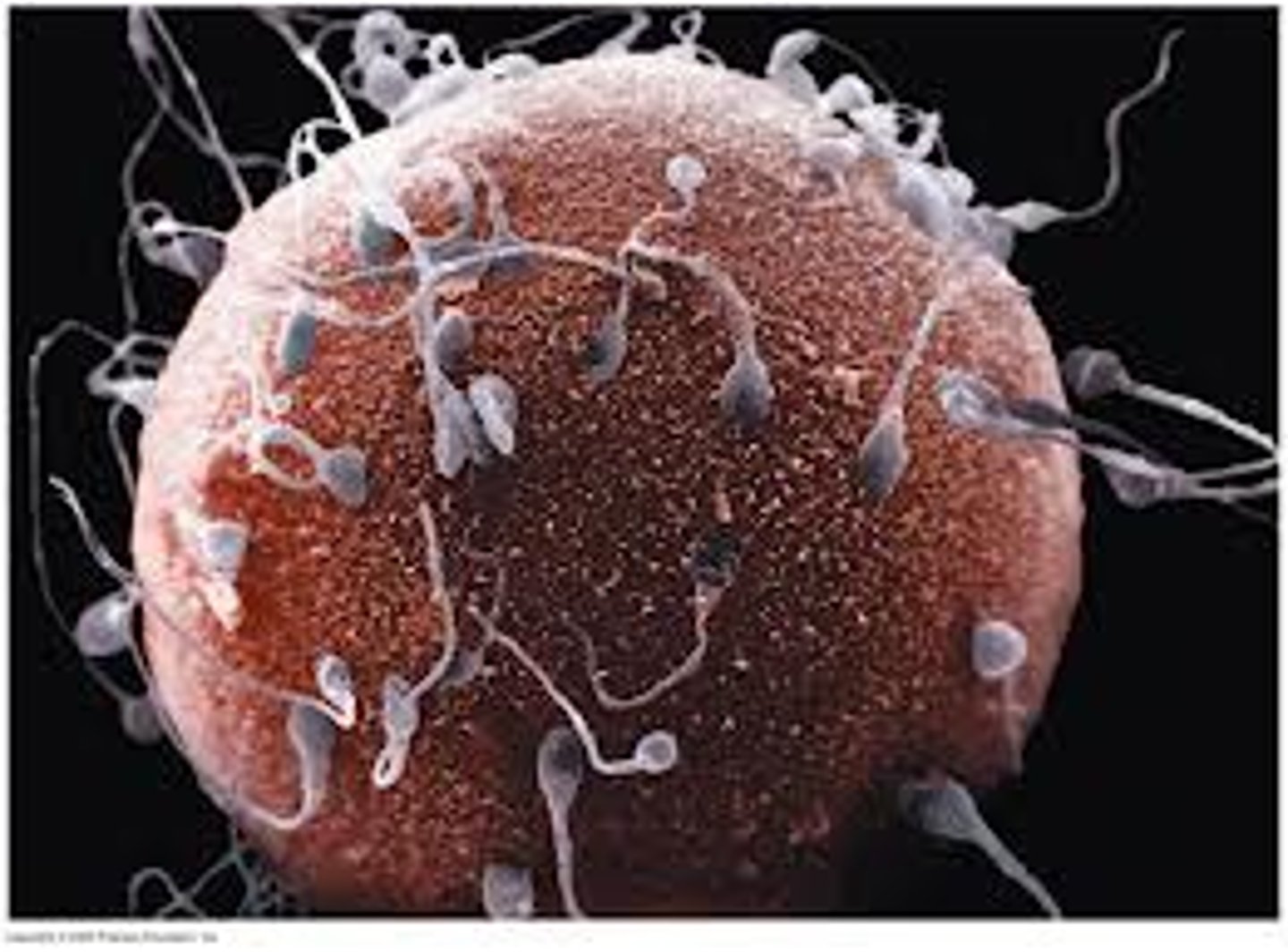
Independent assortment
A principle that genes do not influence each other's inheritance because they are separated independently during meiosis
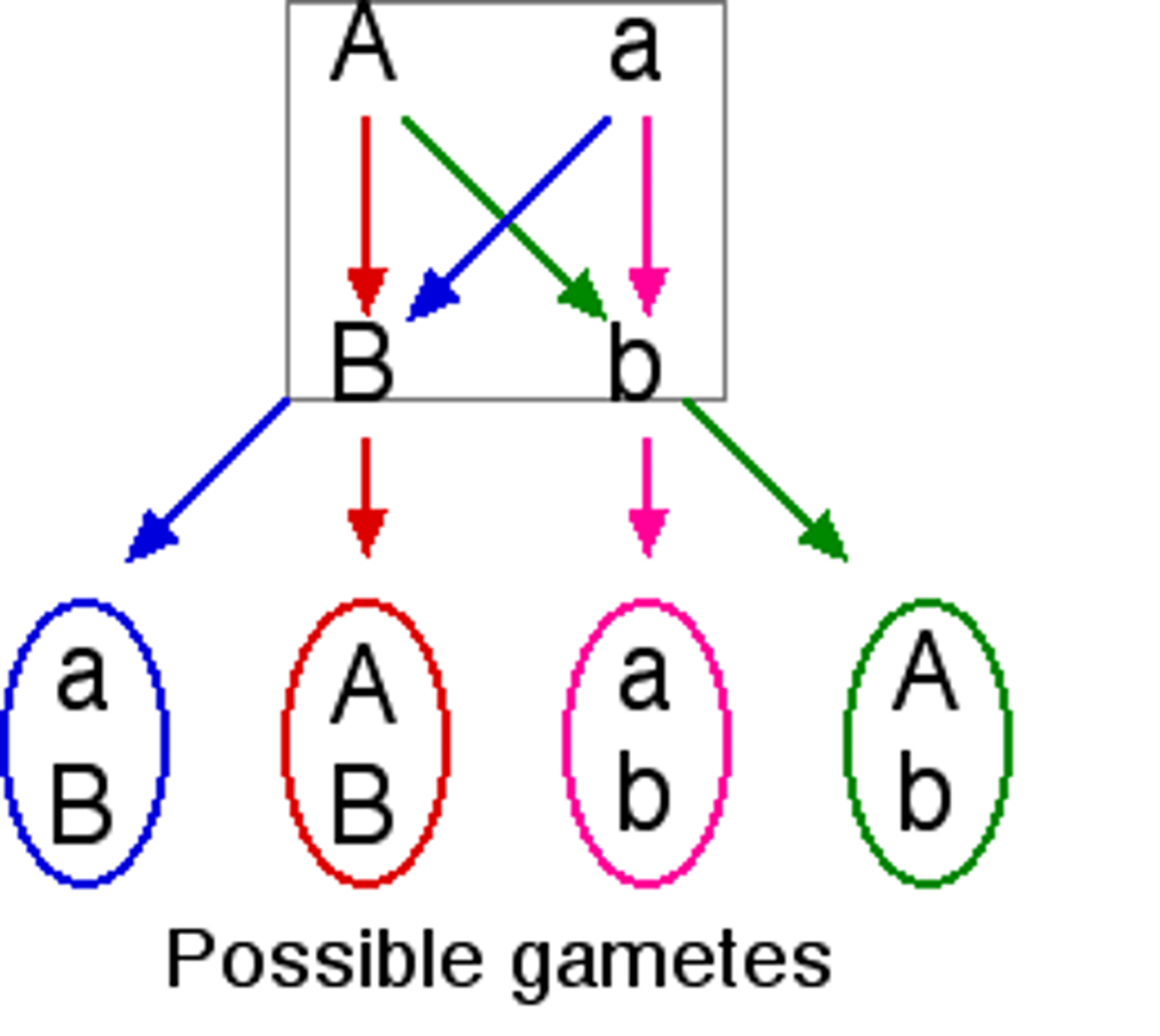
Hybrid
An organism that has two different alleles for a trait; heterozygous for the trait; Tt
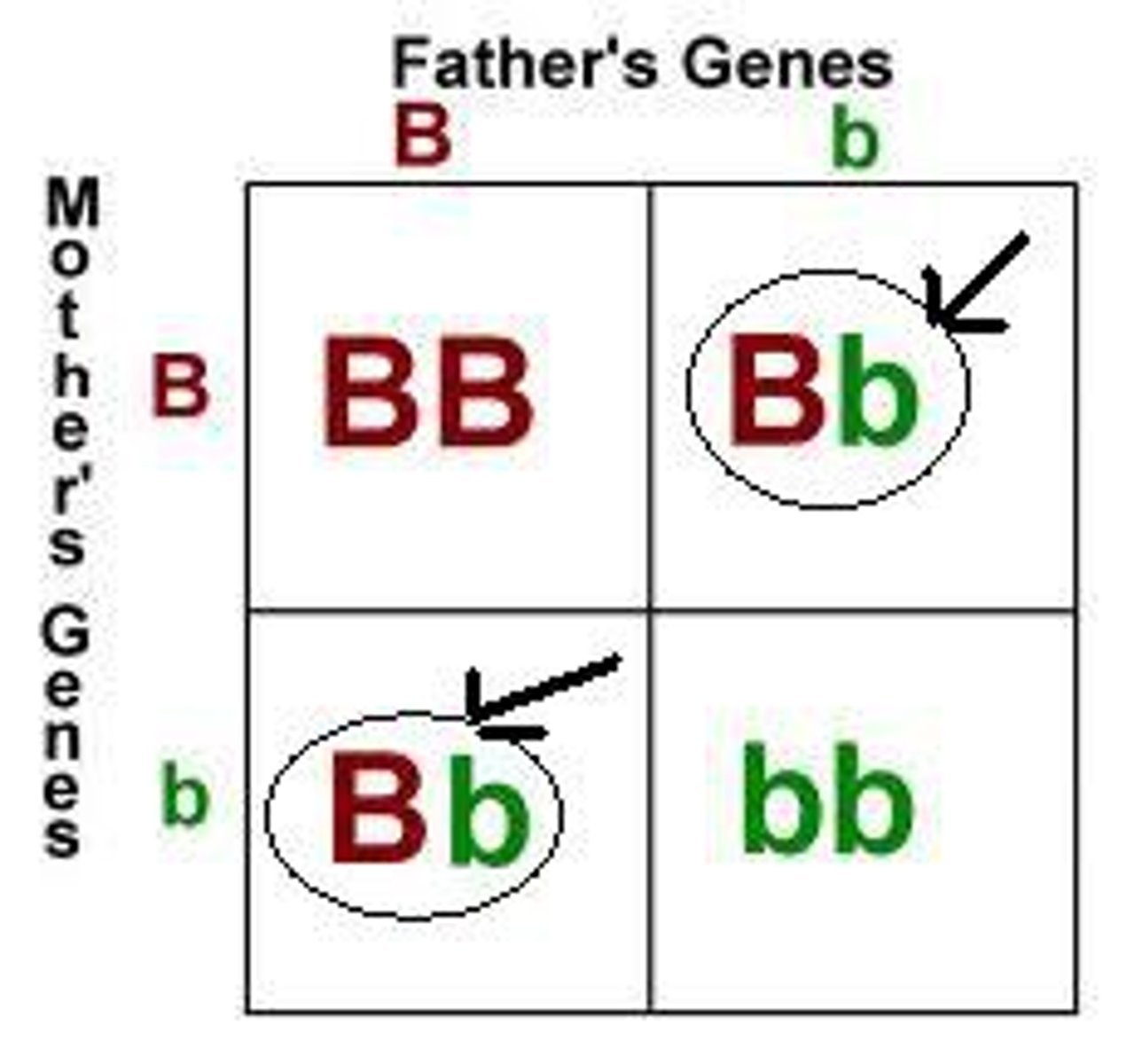
Principle of Dominance
Mendel's conclusion that some alleles are dominant and others are recessive
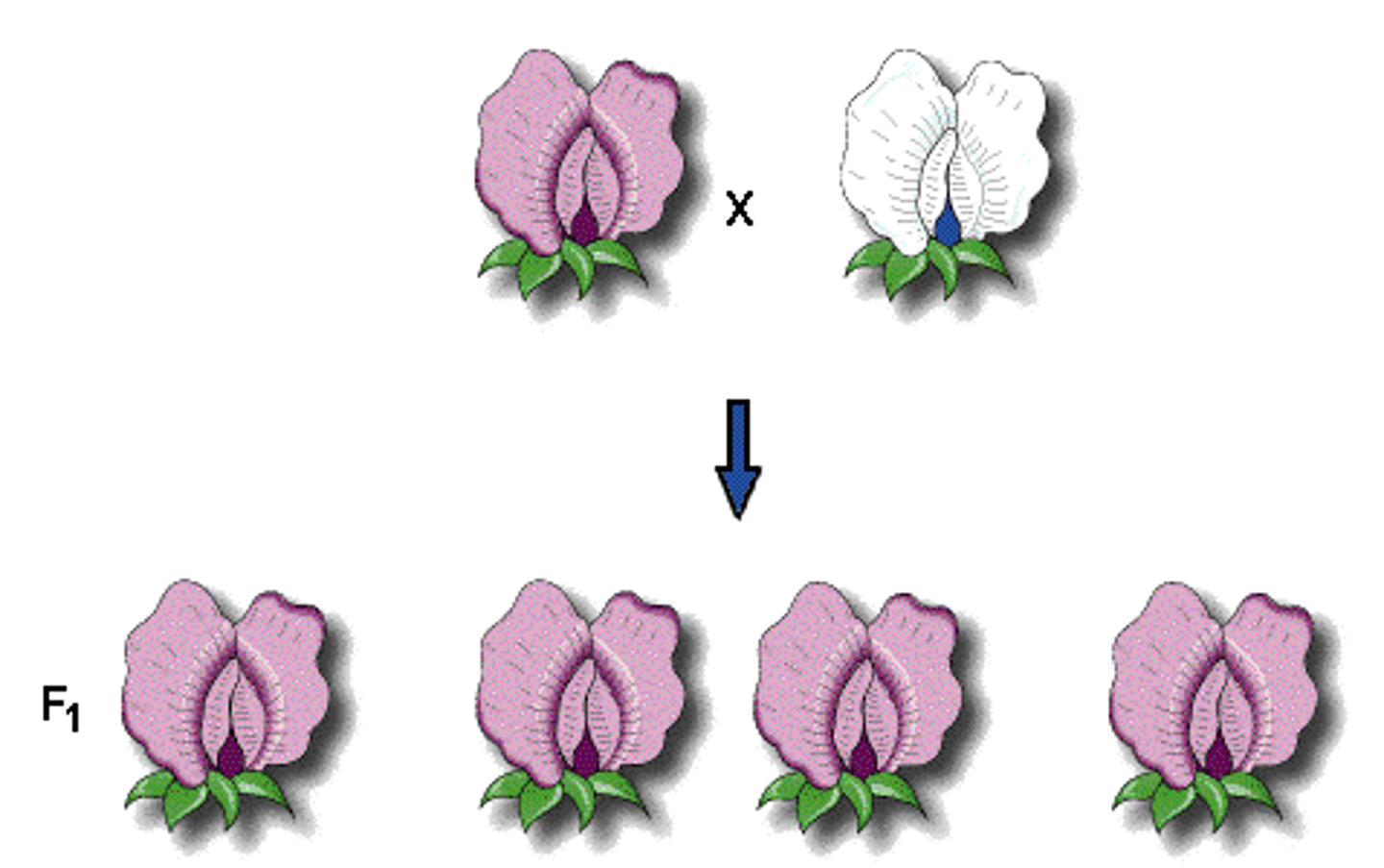
Law of Segregation
Mendel's law that states that the pairs of homologous chromosomes separate in meiosis so that only one chromosome from each pair is present in each gamete

Law of Independent Assortment
Mendel's second law, stating that each allele pair segregates independently during gamete formation; applies when genes for two characteristics are located on different pairs of homologous chromosomes
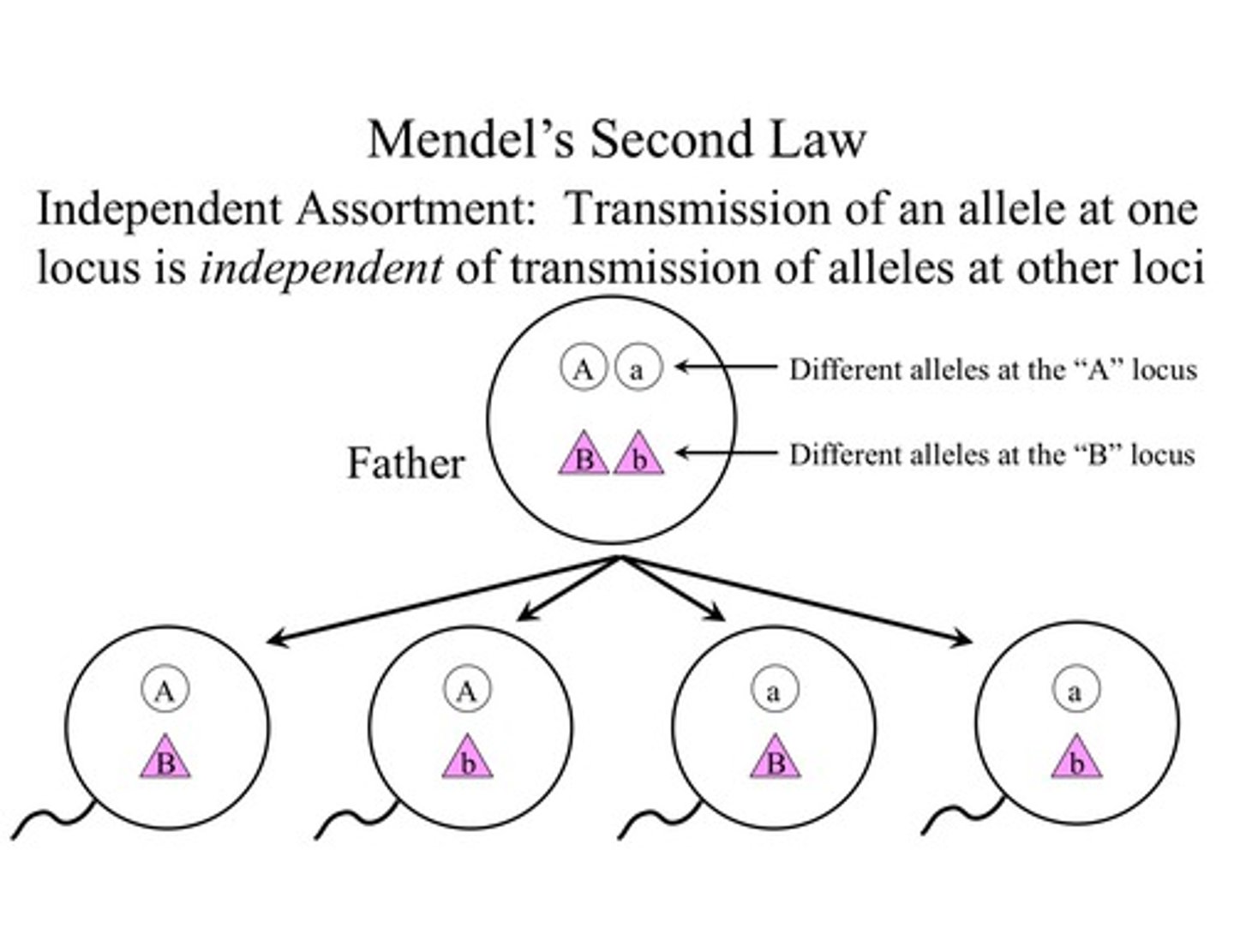
Gregor Mendel
Austrian monk and botanist whose experiments in breeding garden peas led to his eventual recognition as founder of the science of genetics (1822-1884); experiments with pea plants led to the law of dominance, independent assortment, and segregation.
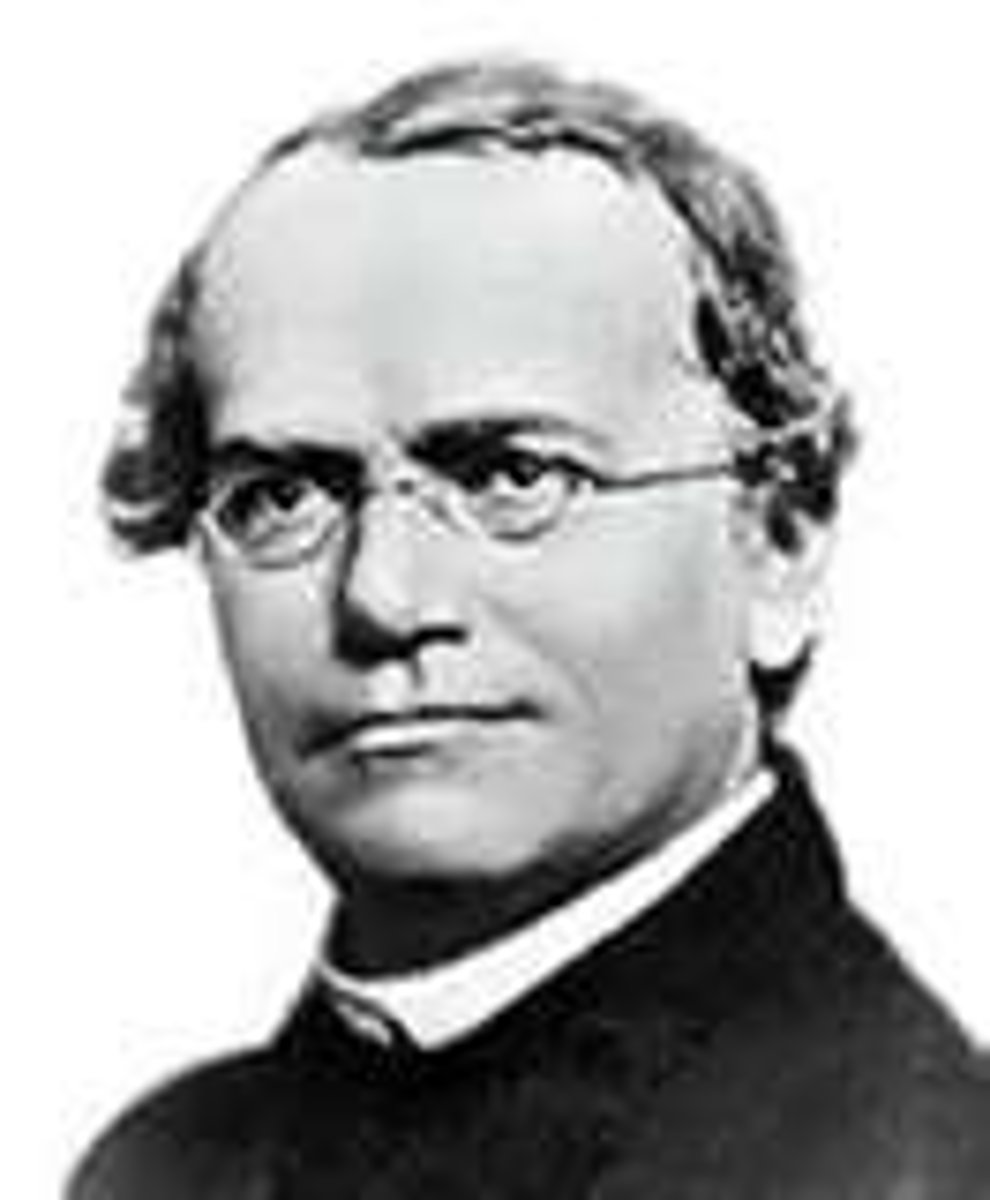
Flower
Reproductive structure of the plant
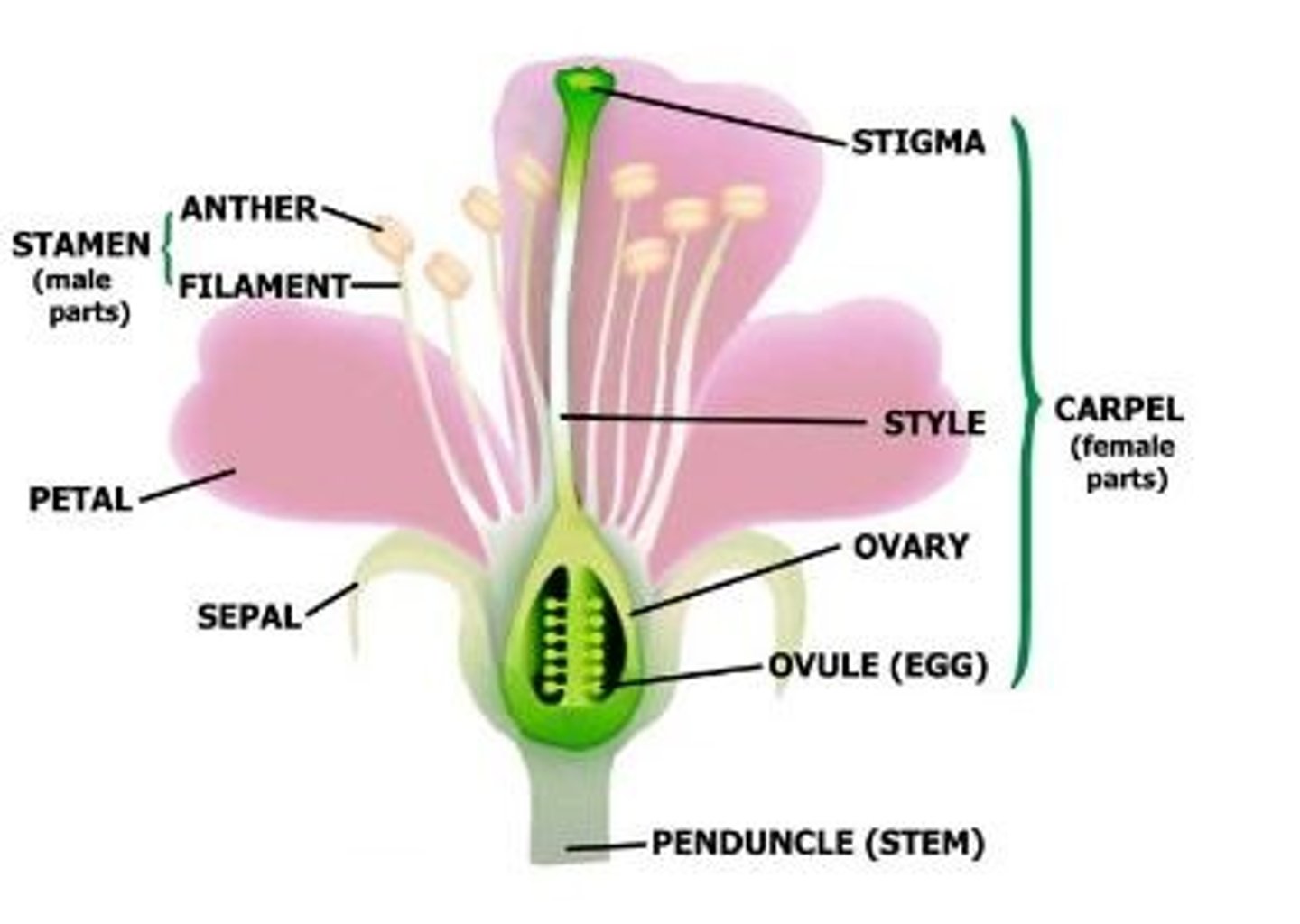
Pollen
A fine powdery substance, typically yellow, produced by the male part of a flower that contains the male gametes or sperm
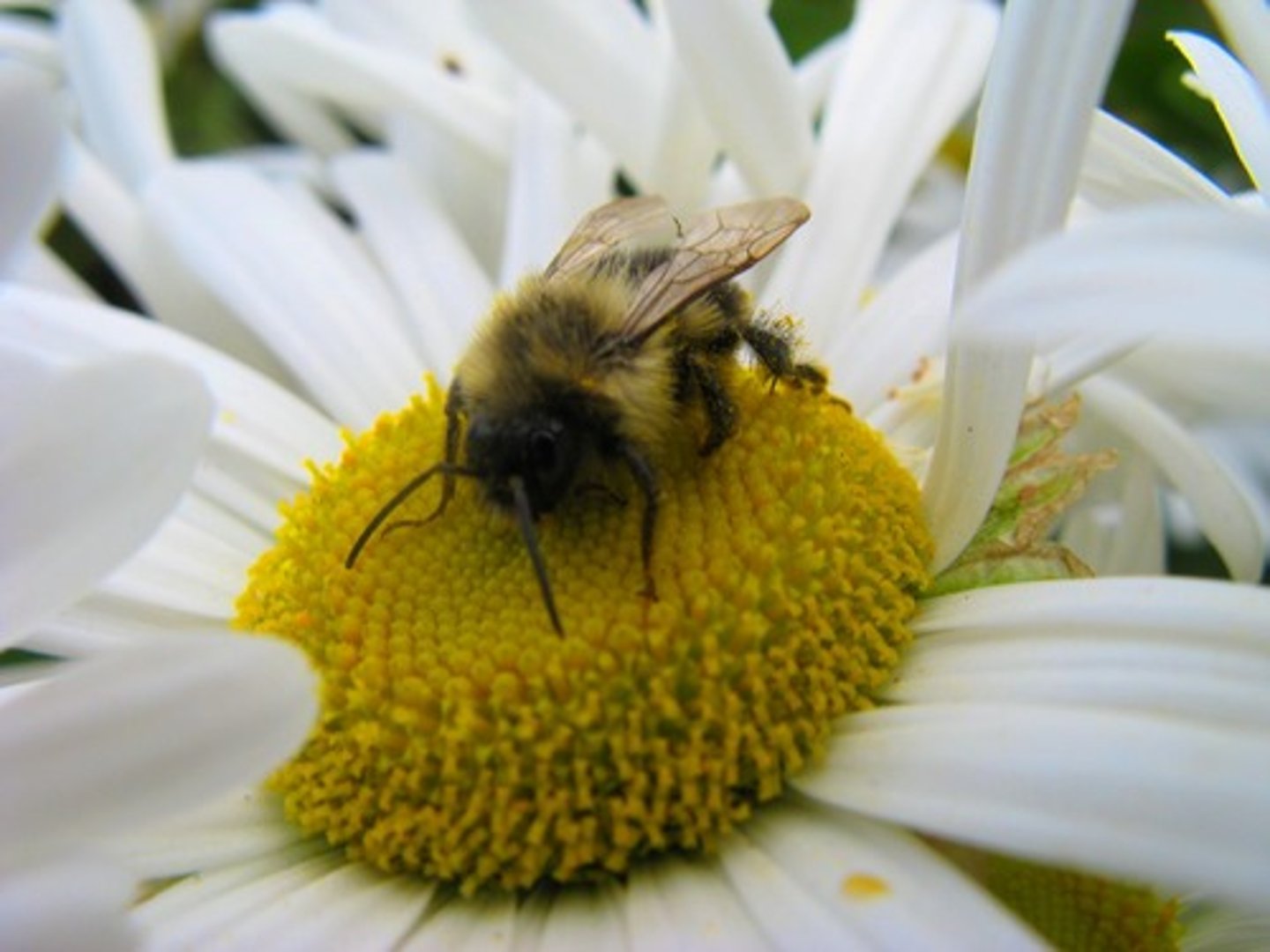
Ovule
A structure that develops within the ovary of a seed plant that contains the female germ cell and after fertilization becomes the seed; female gamete

P Generation
Parental generation, the first two individuals that mate in a genetic cross
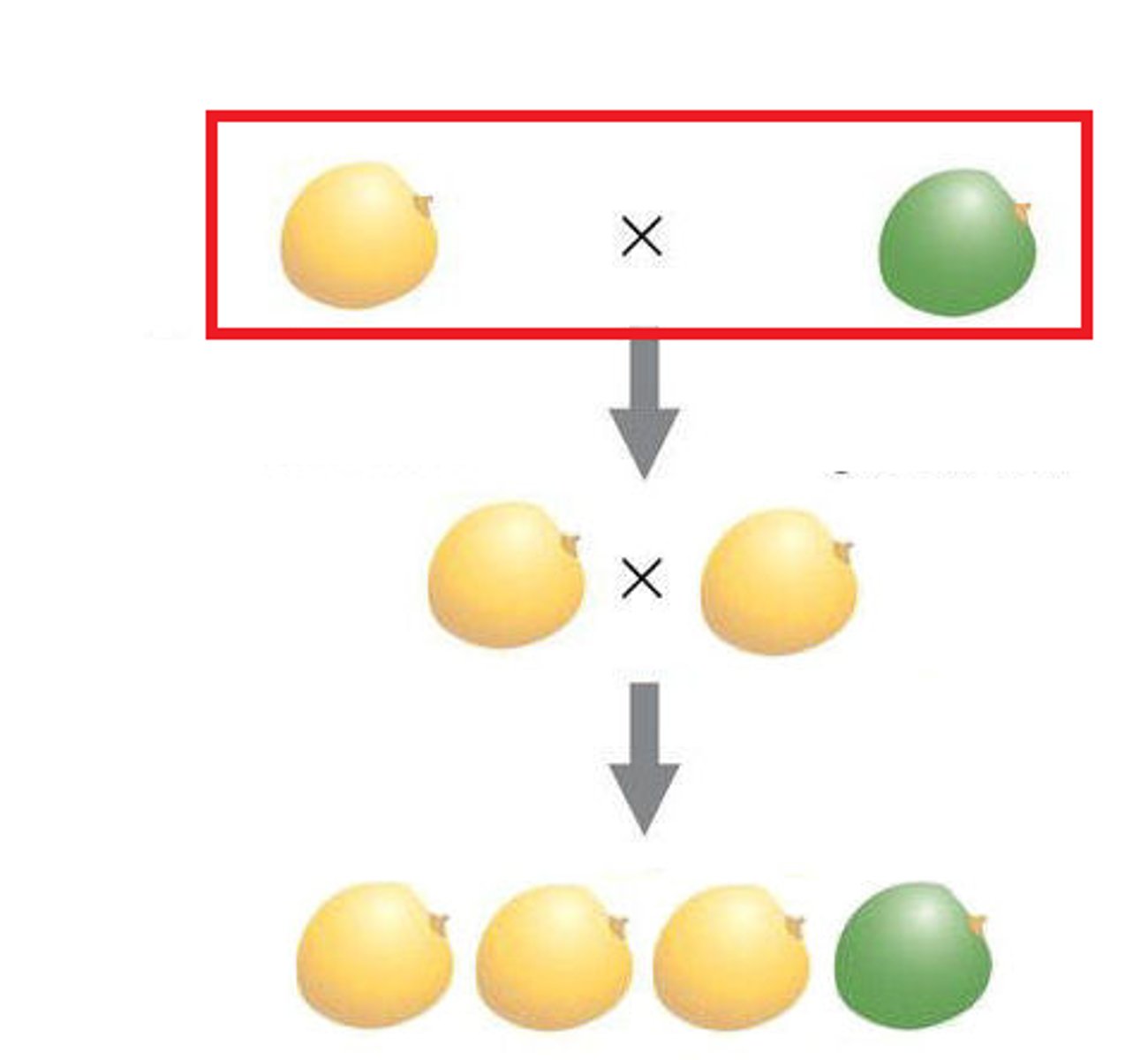
F1 Generation
The first generation of offspring obtained from an experimental cross of two organisms
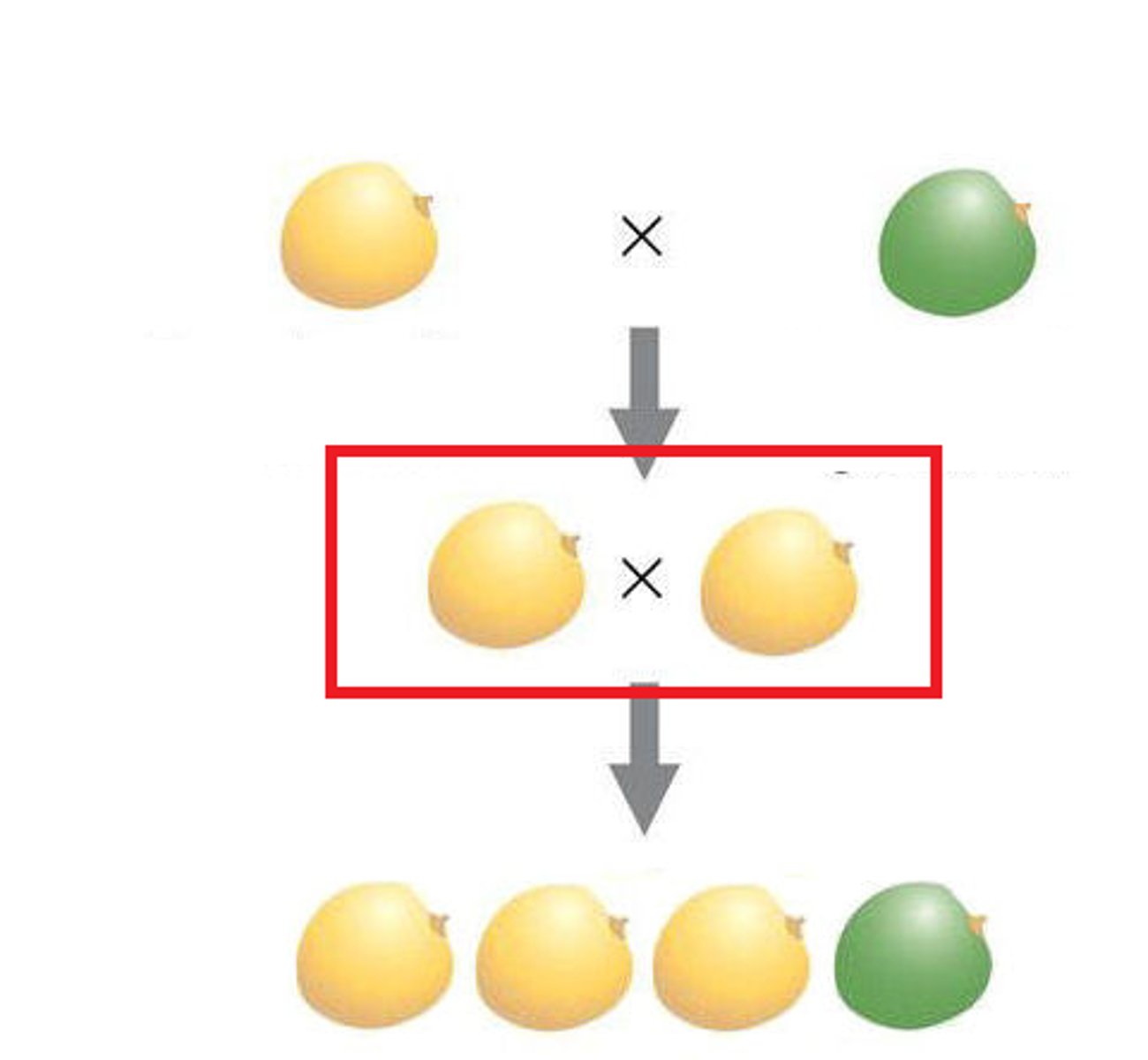
F2 Generation
The second generation of offspring obtained from an experimental cross of two F1 organisms
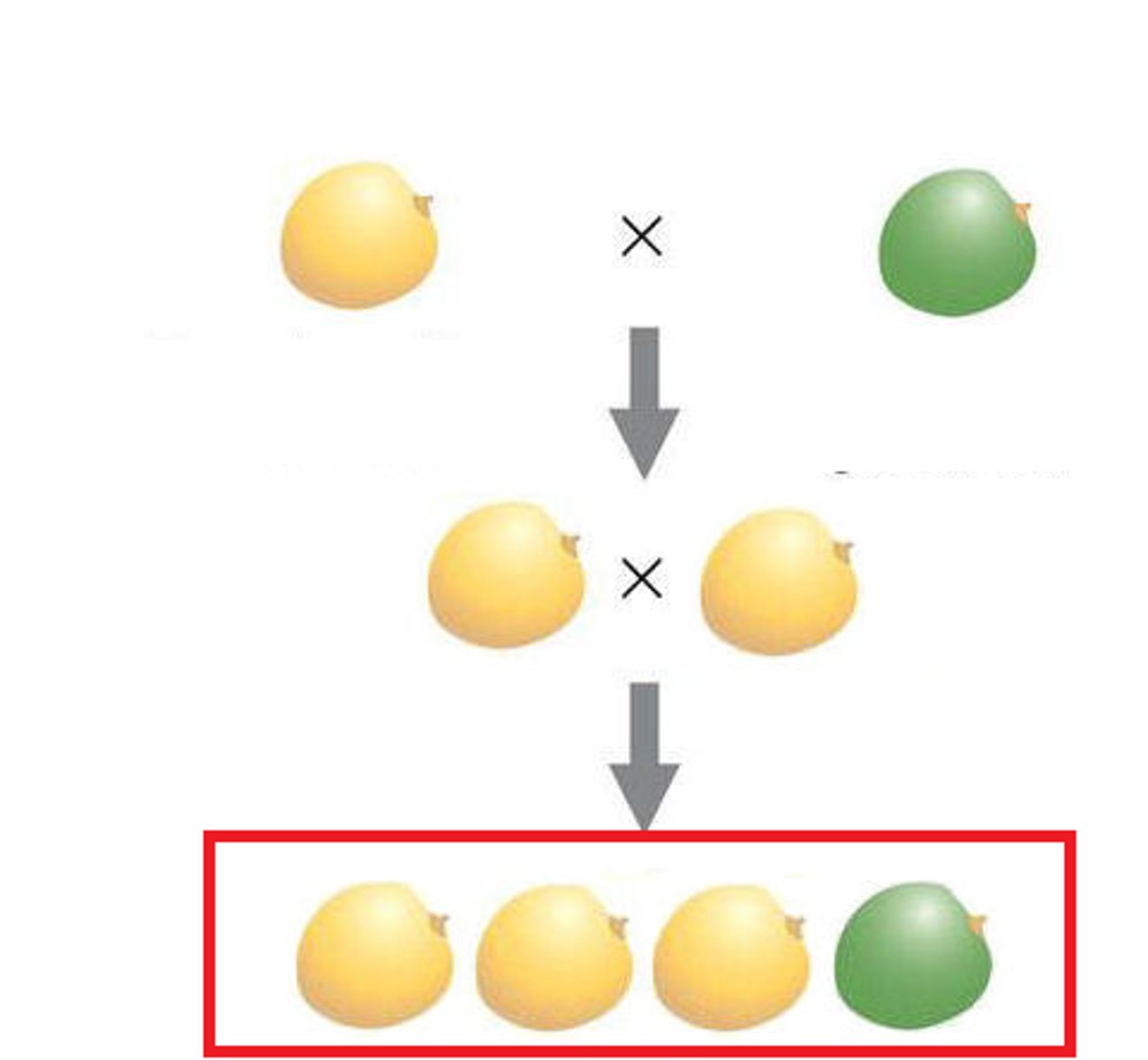
Pea Traits (Examples)
Seed shape
Seed color
Flower color
Pod shape
Pod color
Flower Location
Plant height
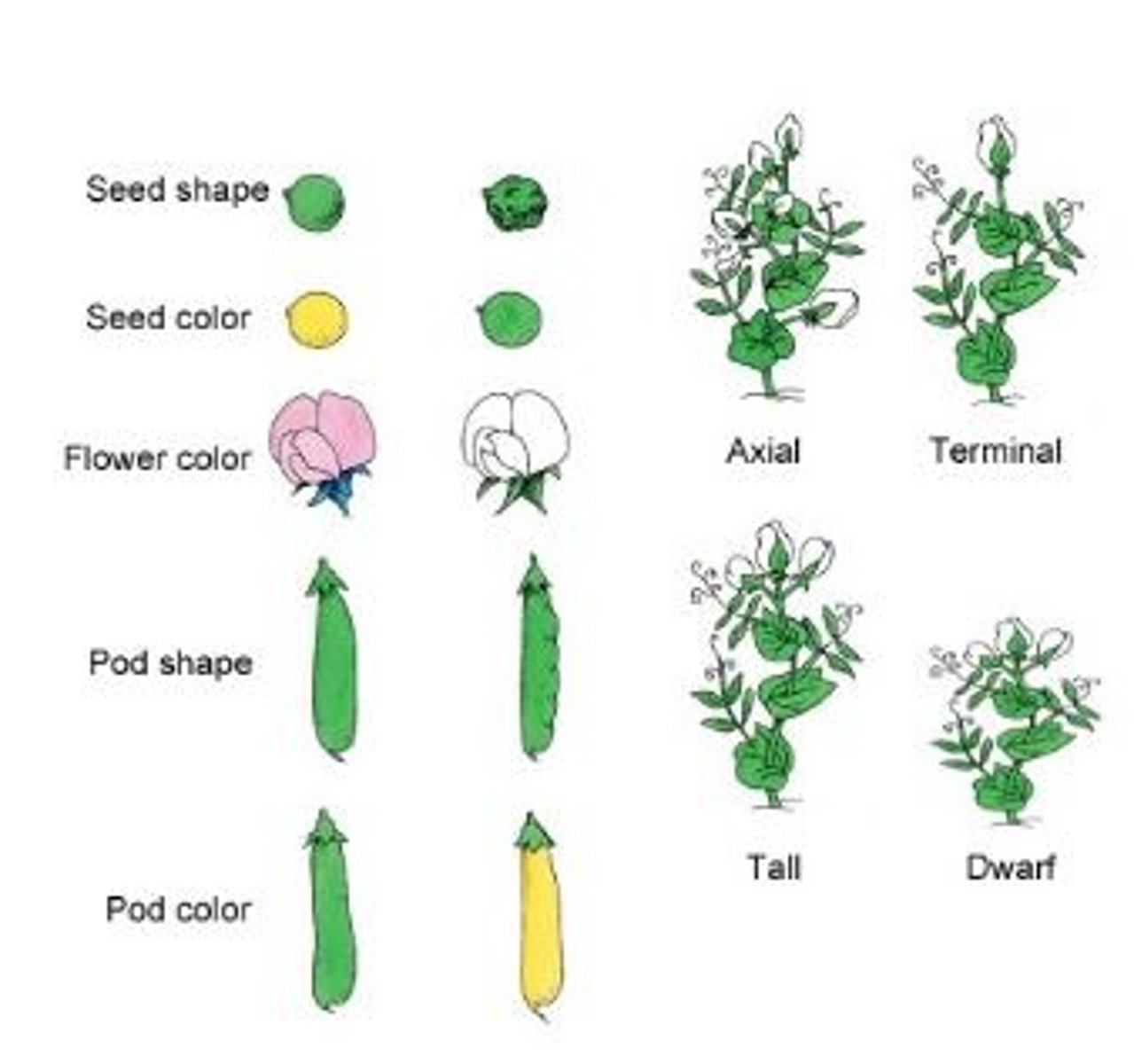
Phenotype
An organism's physical appearance, or visible traits such as height, flower color, seed shape, etc.
Genotype
An organism's genetic makeup, or allele combinations such as TT, Tt, tt
Heterozygous
An organism that has two different alleles for a trait such as Tt
Homozygous
An organism that has two identical alleles for a trait such as TT or tt